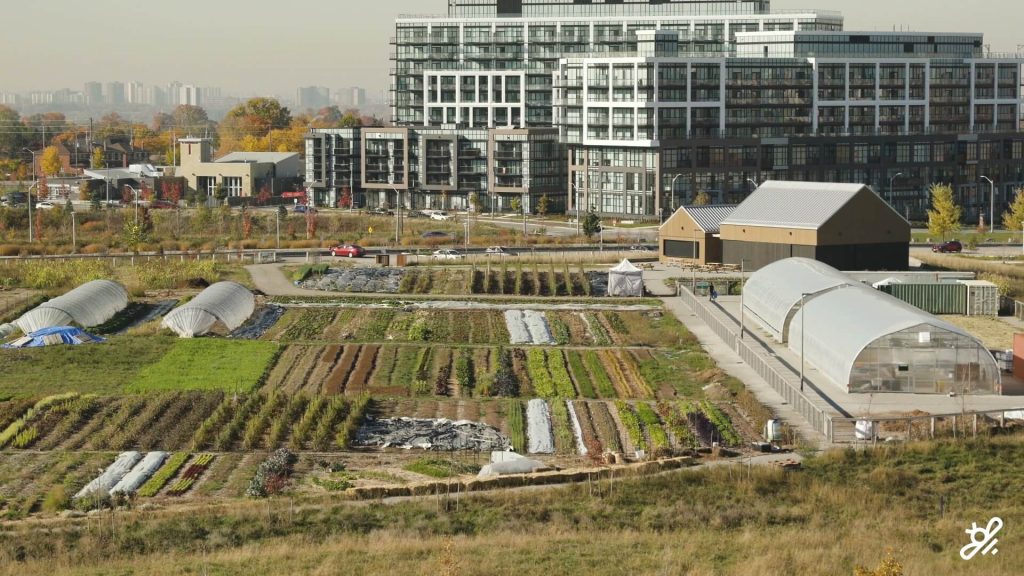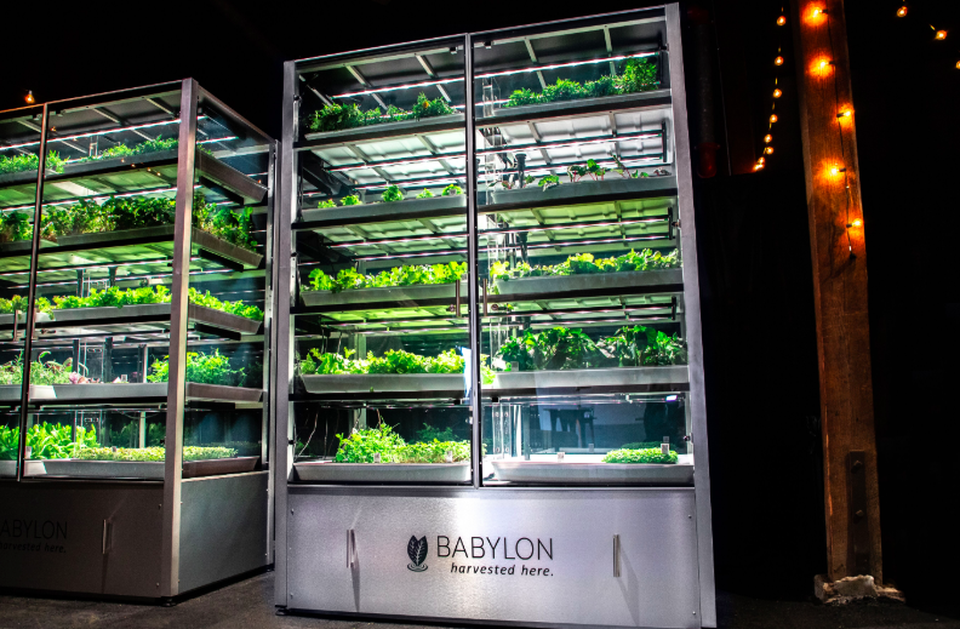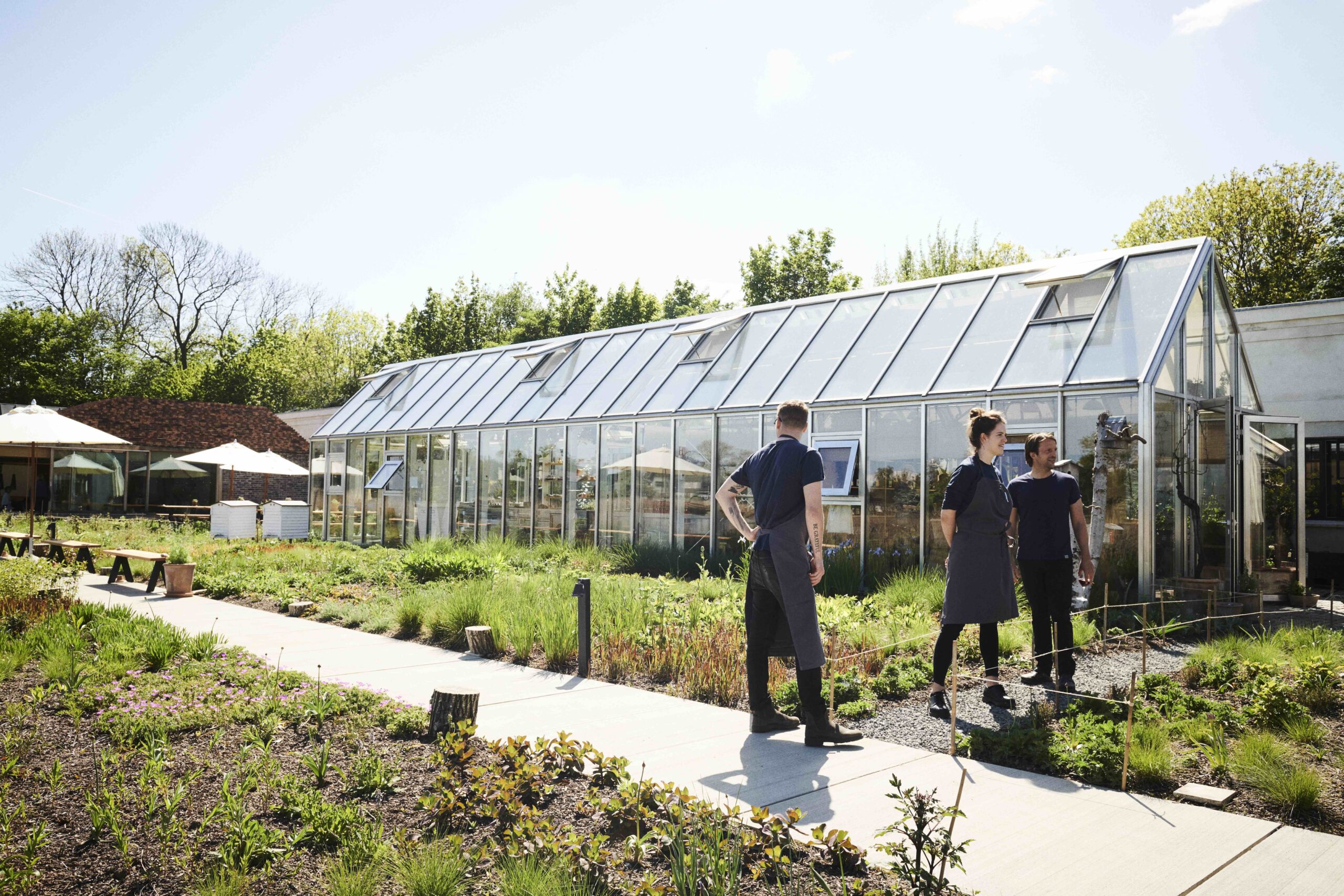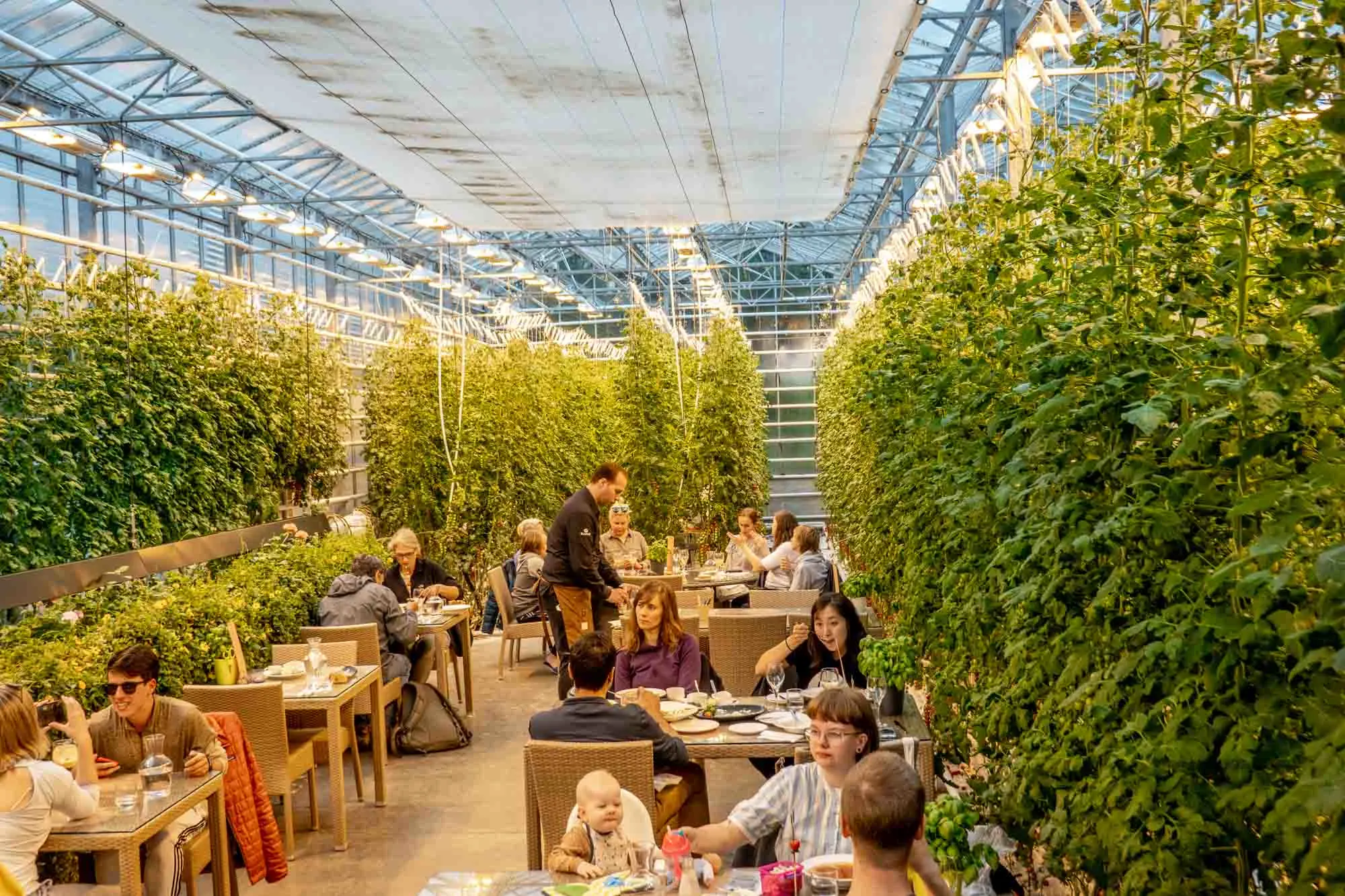Feb 15, 2024
Understanding the Farm-to-Table Movement: A Comprehensive Guide for Developers, Architects, Designers and Hospitality Professionals

Source: https://www.gardenstead.com/what-is-an-urban-farm-and-why-are-they-so-important/
Written by: Niko Simos and Henry Gordon-Smith
February 15, 2024
Farm-to-Table: A Sustainable Solution for Food Insecurity
You, as a professional in the architectural, design or hospitality industry, may often ask - how do we bridge the gap between fresh, quality ingredients and our consumers? Welcome to the farm-to-table movement, a brilliant answer that has been around for a while but remains unknown to most. Let's take a closer look at the farm-to-table movement and what it means for hospitality professionals.
By its very definition, farm-to-table is a social movement that promotes serving locally grown food directly from its origin to the consumers, often facilitated by restaurants, developers or even grocery stores. Here, you will invariably find a blend of principles that rest heavily on environmental sustainability, local economic support, and of course, fresher, healthier dining experiences
What are the key principles of the farm-to-table movement?
The Farm-to-Table Movement, also called Farm-to-Plate or Farm-to-Fork Movement, emerged as consumer preferences evolved. The proliferation of processed food from large corporations and the opposing need for fresh, organic, and sustainable food production has led to this social movement. It’s where restaurants and local communities source their ingredients straight from local farms instead of being shipped long distances via a middleman. The farm-to-table movement emphasizes the use of locally sourced ingredients, typically through direct acquisition from the producer. This direct approach ensures fresher, more nutritious, and more sustainable products.
What is the history of the farm-to-table movement?
The roots of the farm to table trend stretch back to the 1960s and 70s when Americans became increasingly dissatisfied with processed foods that they found bland and untrustworthy. The movement gained momentum in the 1970s when Alice Waters opened the first farm-to-table restaurant, Chez Panisse, in California.
It started as a small movement but is still gaining momentum with more restaurants, hospitality, architects, and developers trying to include it in their projects.
As consumer preferences pivot towards healthier, more sustainable dining options, the farm-to-table movement has emerged as a beacon of change within the hospitality industry. With an increased focus on sustainability and local sourcing, restaurants and hotels are embracing this ethos, recognizing the benefits it brings not only to their bottom line but also to the planet. There are real opportunities here as survey's suggest that over 75% of consumers are willing to pay more for locally sourced food.
Beyond being just good business, its also good for the environment as Farm-to-table practices can reduce carbon footprint due to less transportation of goods. By forging partnerships with local farmers and producers, or even creating their own farming facilities, establishments can offer fresher, higher-quality ingredients while reducing their carbon footprint and supporting the surrounding community. This shift towards farm-to-table practices not only enhances the dining experience for patrons but also fosters a deeper connection between consumers and the food they consume, promoting a sense of transparency and trust. Through collaboration between developers and architects, spaces can be designed to seamlessly integrate these principles, creating environments that celebrate the richness of local culture and cuisine while championing sustainability at every turn.
Developers, architects, and designers play a crucial role in the farm-to-table movement by creating spaces that facilitate the connection between consumers and locally sourced food.
How can developers incorporate farm-to-table principles into their projects?
One way for developers to support local food markets and restaurants that source their products locally is by incorporating them into their projects. For example, they can include mixed-use developments that have food retail spaces, which can make it easier for people to access fresh and locally sourced food. Additionally, they can also create residential developments that feature community gardens or farm plots, which not only provides residents with fresh produce but also promotes a sense of community and connection to the land. By prioritizing the inclusion of local food markets and restaurants, developers can help support the local economy, reduce the carbon footprint associated with long-distance transportation of food, and promote healthy and sustainable lifestyles.
What role do architects play in the farm-to-table movement?
Architects possess the unique ability to play a significant role in promoting and supporting the farm-to-table movement. By designing buildings and spaces that enable farm-to-table practices, they can inspire and facilitate the consumption of locally sourced, organic and sustainable foods. To achieve this, architects can create restaurants with open kitchens that allow customers to observe the food preparation process, instilling a sense of connection and trust. They can also incorporate spaces that promote food growth, such as rooftop gardens or greenhouses, enabling the cultivation of fresh produce. Additionally, architects can design buildings that utilize sustainable practices, such as renewable energy and recycled materials, which aligns with the environmental consciousness that is central to the farm-to-table movement.

Source: https://www.archdaily.com/923857/the-worlds-largest-urban-farm-opens-next-year-in-paris
How can designers contribute to the farm-to-table movement?
Designers play a role in the farm-to-table movement by creating interior spaces and products that reflect the values of local, sustainable food production. This can be seen in the choice of materials, colors, and layouts that evoke a sense of connection to the local environment and food sources. Designers can also create products, such as tableware or packaging, that are made from sustainable materials and reflect the ethos of the farm-to-table movement.
What are the benefits of farm-to-table restaurants?
The hospitality industry is adapting to the farm-to-table trend in several ways. One of the most prominent is by sourcing ingredients directly from local farmers. This not only ensures the freshness and quality of the food served, but also supports local economies and reduces the environmental impact of long-distance transportation.Many restaurants are also redesigning their menus to reflect seasonal availability of ingredients. This means that the dishes offered change throughout the year, depending on what produce is in season. This approach not only provides variety for the customers, but also allows chefs to work with the freshest ingredients.Another adaptation is the incorporation of urban farming into the hospitality industry. Some restaurants and hotels are creating their own gardens or even rooftop farms to grow their own produce. This not only guarantees the freshness of the ingredients, but also allows for a unique dining experience where customers can see where their food comes from. Finally, the hospitality industry is also using the farm-to-table trend as a marketing tool. By promoting their commitment to local and sustainable sourcing, establishments can attract customers who value these principles. This not only helps to differentiate them from their competitors, but also contributes to a positive brand image.

Furthermore, all these professionals can collaborate to create a holistic environment that supports the farm-to-table movement. By working together, developers, architects, and designers can ensure that the spaces they create not only facilitate the consumption of locally sourced food, but also educate the public about the importance of local, sustainable food production. This can be achieved through the use of signage, interactive displays, or even the architecture and design of the space itself.
What are some successful examples of farm-to-table practices in the hospitality industry?

Source: https://globetrender.com/2020/06/12/noma-restaurant-burger-wine-bar/noma-greenhouse/
The restaurant Noma in Copenhagen, Denmark, is a three-Michelin-starred establishment known for its innovative New Nordic Cuisine. In addition to its three Michelin stars, Noma has also been awarded the MICHELIN Green Star for its commitment to sustainable practices and for establishing the best work environment possible for the well-being of its employees.

Source: https://traveladdicts.net/fridheimar-tomato-restaurant-iceland/
Another good example is Fridheimar, where the star of the show is tomatoes. The farm harnesses geothermal energy and uses artificial lights and a climate-control system to grow tomatoes and other vegetables all year round. Eating in the greenhouse - restaurant will give you the chance of sitting alongside four different varieties of tomato plants. You'll get to try tomato soup, tomato ice cream, and even tomato beer.
What are some challenges?
As a developer or architect, you might find some challenges in embedding the farm-to-table practices into projects. Key among these potential obstacles is striking a balance between sourcing locally and maintaining cost controls. Often, locally produced goods and materials may hike up costs compared to conventionally sourced alternatives. Another hurdle is dealing with seasonal variations. Local crops follow seasonal patterns, so it can be hard to ensure year-round consistency in your offerings.
Furthermore, you might find it daunting to design spaces that accommodate both agricultural production and hospitality. Balancing aesthetics, functionality, and sustainability takes a careful and thoughtful approach. To top it all, unfamiliarity with local farming practices and restrictions could also pose a problem. Understanding cultivation techniques, soil management, and local food laws is essential for a successful implementation of farm-to-table practices.
To overcome these challenges, there's a need for innovative strategies. Agritecture Consulting can offer these strategies with it’s project management and assistance on every aspect of the project from concept development, economic quetions till the planning and facilitating the farming operation.
🌱 Bring the Farm-to-Table Experience to Life in Your Next Project
Stand out by creating spaces that celebrate sustainability, local food culture, and unforgettable dining experiences. Whether you’re developing a new property, designing a restaurant, or planning an urban renewal project, Agritecture’s experts will help you integrate farm-to-table solutions that delight your clients and boost your bottom line.
👉 Book a Free Consultation Today and start building the future of sustainable hospitality.

.png?width=1061&height=133&name=AD%20Newsletter%20Banners%20(1).png)